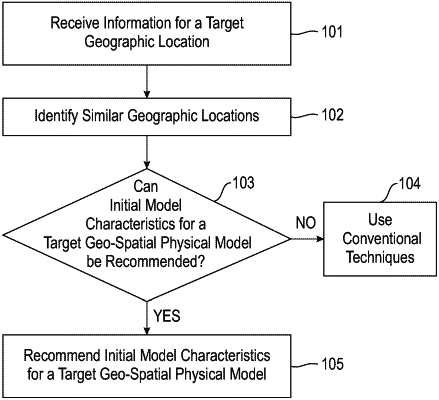| CPC G06Q 50/165 (2013.01) [G06F 30/27 (2020.01); G06N 5/04 (2013.01); G06N 20/00 (2019.01); G06T 17/05 (2013.01); G06F 16/29 (2019.01); G06T 2207/20081 (2013.01)] | 20 Claims |

|
1. A method for developing a target geo-spatial physical model, the method comprising:
receiving information related to a target geographic location, wherein the information describes geographical and domain features of the target geographic location;
identifying, using at least one similarity algorithm, at least one other geographic location that is similar to the target geographic location, wherein the at least one other geographic location has at least one corresponding historical geo-spatial physical model; and
recommending model characteristics, using at least one machine-learning model having a historical lineage data corresponding to the at least one other geographic location, and initial model characteristics, for developing and deploying the target geo-spatial physical model, wherein the initial model characteristics identify information corresponding to the target geo-spatial physical model and comprise (i) at least one input data source for the target geo-spatial physical model, (ii) at least one data transformation to be used within the target geo-spatial physical model, and (iii) at least one model performance parameter for the target geo-spatial physical model;
training said machine learning model using the historical lineage data of the historical geospatial physical models and the initial model characteristics to produce one or more target geo-spatial physical models;
producing the target geo-spatial physical model for the target geographic location based on the recommendations for model characteristics for developing and deploying the target geo-spatial physical model;
using the produced target geo-spatial physical model for one of weather forecasting, air pollution predicting, forest fire predicting, flood forecasting and soil moisture estimation to make best use of land.
|